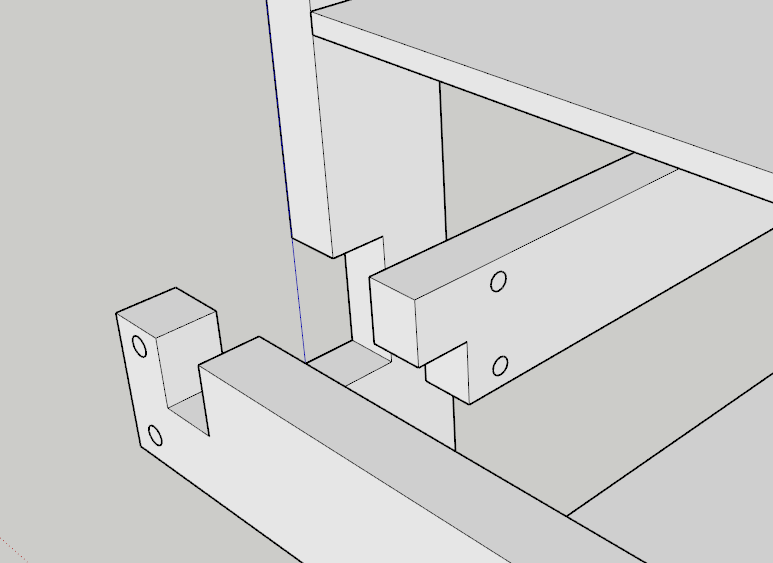A few years ago I built a simple 2x4 and plywood shelving unit for my garage. I am planning to build a similar shelf, but I am looking for a way to improve the strength of the joints.
Here's how I made the shelf before:

The circles in my picture represent the screws that are used to fasten everything together.
The problem with this design is that the entire weight of each shelf is a shearing force on the screws. The longer the shelf (and thus the more things I put on the shelf), the more weight on those same few screws.
So, I was trying to come up with a similar design that uses some simple joints to make the shelf a bit stronger. The picture below is what I came up with:
And exploded:
I figured that this would be stronger because the weight of the shelves is now transferred to the vertical supports directly via the join.
My question is, is this truly stronger than the design using screws? Is there a better way to achieve strength in this type of shelf?

